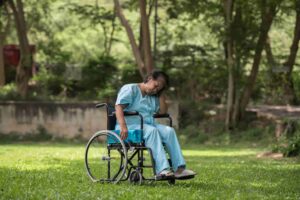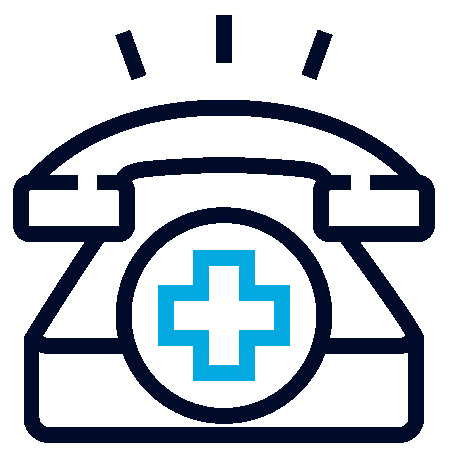What Is Paralysis?
In precise medical terminology, paralysis is defined as the partial or complete loss of voluntary muscle function in one or more parts of the body, stemming from a disruption in the intricate communication pathways that transmit signals between the brain, spinal cord, and muscles. This interruption can arise from a variety of pathological processes, including direct damage to the nervous system, leading to an inability to initiate or control movements as intended. Paralysis can manifest in diverse forms, ranging from temporary episodes that resolve with time and treatment to permanent conditions that require lifelong adaptations. For instance, in cases of stomach paralysis, medically termed gastroparesis, the muscles of the stomach fail to contract effectively, resulting in slowed gastric emptying, persistent nausea, bloating, and potential nutritional deficiencies that can complicate overall health [1]. The hallmark paralysis symptoms encompass a spectrum of manifestations, including progressive muscle weakness, sensory disturbances like numbness or tingling sensations, diminished or absent reflexes, and in some cases, involuntary muscle contractions or spasms, all of which can significantly impair an individual’s functional independence and daily living activities.

The underlying mechanism of paralysis typically involves the impairment of neural pathways, which may be triggered by acute injuries, chronic degenerative diseases, or systemic health issues. A prime example is stroke paralysis, where a sudden interruption in cerebral blood flow leads to brain tissue damage, often resulting in paralysis on one side of the body, commonly referred to as hemiplegia. This unilateral paralysis can manifest as left side paralysis if the right hemisphere of the brain is affected, presenting challenges such as difficulty in walking, grasping objects, or even performing basic self-care tasks like dressing or eating. According to epidemiological data from global health studies, paralysis affects more than 1 in 50 individuals worldwide, with its prevalence varying based on factors like age, lifestyle, and geographic location [2]. The severity can range from mild partial paralysis, where some residual muscle strength remains, to profound complete paralysis that necessitates assistive devices or full-time care. Importantly, the early identification and management of these symptoms through targeted paralysis treatments can lead to substantial functional recovery, with clinical evidence suggesting that up to 70% of cases may experience significant improvement when the underlying cause is addressed promptly and appropriately [2]. This underscores the necessity for public awareness and accessible healthcare to mitigate the long-term impacts of this condition.
Types Of Paralysis
The classification of paralysis is multifaceted, determined by criteria such as the extent of muscle involvement, the anatomical location affected, and the qualitative nature of the muscle dysfunction. Broadly, the four primary types recognized in medical literature are monoplegia, which affects a single limb; hemiplegia, impacting one entire side of the body; paraplegia, involving the lower half of the body including both legs; and quadriplegia (also known as tetraplegia), which encompasses all four limbs and often the trunk [2]. Beyond these general categories, more specific subtypes exist based on the underlying pathophysiology. For example, spastic paralysis is characterized by increased muscle tone, leading to stiffness, exaggerated reflexes, and jerky, uncontrolled movements, frequently observed in conditions like cerebral palsy or as a sequela of multiple sclerosis where upper motor neurons are damaged [3]. In contrast, flaccid paralysis presents with limp, floppy muscles and reduced reflexes, as seen in lower motor neuron disorders such as poliomyelitis or peripheral neuropathies.
Additionally, visceral forms of paralysis affect internal organs, such as stomach paralysis or gastroparesis, which disrupts normal digestive processes and is commonly associated with long-standing diabetes mellitus or post-viral syndromes [1]. Other variants include periodic paralysis, where episodes of muscle weakness occur intermittently due to ion channel abnormalities, and functional paralysis, which may have psychological roots without detectable organic damage. Understanding these distinctions is crucial for tailoring diagnostic and therapeutic approaches effectively.
What Is Permanent Paralysis?
Permanent paralysis denotes a state where the loss of muscle function is irreversible, typically resulting from extensive and irreparable damage to neural structures, such as complete transection of the spinal cord in cases of severe trauma induced paralysis from high-impact accidents like motor vehicle collisions or falls from height [4]. In such scenarios, the severed nerve fibers fail to regenerate fully, leading to a lifelong dependency on mobility aids such as wheelchairs, braces, or advanced exoskeletons. While the concept of permanence might seem absolute, emerging research into neuroplasticity—the brain’s ability to reorganize itself—suggests that some degree of adaptation and partial functional recovery can occur through intensive rehabilitation, though complete restoration remains elusive in most severe cases [4]. Patients grappling with permanent paralysis often encounter a cascade of secondary issues, including progressive muscle atrophy due to disuse, chronic spasticity that can cause painful contractures, and heightened susceptibility to pressure sores from prolonged immobility. Comprehensive multidisciplinary care, involving neurologists, physical therapists, occupational therapists, and psychologists, is imperative to manage these challenges, optimize remaining abilities, and maintain the highest possible quality of life.
What Is Partial Paralysis?
Conversely, partial paralysis, clinically termed paresis, involves an incomplete diminution of muscle strength, wherein affected individuals retain some capacity for voluntary movement, albeit weakened or uncoordinated. This form is prevalent in conditions like peripheral nerve entrapments or mild cerebrovascular events, such as transient ischemic attacks or minor strokes [5]. A notable example is sciatic nerve paralysis, often precipitated by lumbar disc herniation or piriformis syndrome, which compresses the sciatic nerve and results in partial weakness, particularly in the lower leg, manifesting as foot drop—a difficulty in lifting the front part of the foot—accompanied by shooting pains radiating down the leg [5]. Similarly, leg paralysis in partial forms can stem from compressive neuropathies or early-stage multiple sclerosis. Treatment strategies for partial paralysis emphasize rehabilitation to harness residual muscle function, with evidence from clinical trials indicating that targeted physical therapy and pharmacological interventions can yield improvements in strength and mobility by up to 50% or more, depending on the timeliness of intervention and patient compliance [5]. This highlights the prognostic advantage of partial over complete paralysis, as the presence of spared neural pathways offers a foundation for recovery.
What Causes Paralysis?
The etiological factors contributing to paralysis are remarkably diverse, encompassing acute traumatic events, chronic progressive diseases, infectious agents, autoimmune processes, vascular incidents, and even metabolic imbalances. Predominantly, disorders affecting the central nervous system, such as ischemic or hemorrhagic strokes, account for approximately 80% of paralysis cases, while peripheral nervous system involvement constitutes the remainder [2]. Trauma induced paralysis, for instance, often occurs instantaneously following spinal cord injuries from falls, sports-related accidents, or violence, where mechanical forces disrupt neural integrity and lead to immediate loss of sensory and motor functions below the injury site [6]. Genetic predispositions, toxin exposures, and congenital anomalies also play roles in certain subtypes.
Which Diseases Can Cause Paralysis?
A myriad of diseases can precipitate paralysis, with stroke emerging as the foremost culprit, responsible for stroke paralysis that frequently presents as unilateral weakness or paralysis on one side of the body due to focal brain infarction [2]. In multiple sclerosis, an autoimmune demyelinating disorder, patients experience spastic paralysis as plaques form in the central nervous system, interrupting signal transmission and causing progressive stiffness and gait disturbances [3]. Guillain-Barré syndrome, an acute inflammatory demyelinating polyneuropathy often triggered by infections, leads to ascending leg paralysis starting from the feet and progressing upward, potentially involving respiratory muscles in severe cases [7]. Historical scourges like poliomyelitis cause flaccid paralysis through viral destruction of anterior horn cells in the spinal cord, though vaccination has drastically reduced its incidence [7]. Metabolic conditions, such as hypokalemic periodic paralysis, involve episodic weakness due to electrolyte shifts, while diabetic neuropathy can culminate in stomach paralysis by damaging autonomic nerves regulating gastric motility [1]. Sciatic nerve paralysis typically arises from mechanical compression, such as herniated intervertebral discs, leading to radiculopathy with pain, sensory loss, and motor deficits in the affected limb [5]. Recognizing these disease-specific mechanisms is pivotal for accurate diagnosis and etiology-directed therapy.
What Are The Complications Of Paralysis?
The ramifications of paralysis extend far beyond the initial loss of motor control, engendering a host of secondary complications that can exacerbate morbidity and mortality if not vigilantly managed. Prolonged immobility predisposes individuals to decubitus ulcers (pressure sores), urinary tract infections from catheterization, and venous thromboembolism such as deep vein thrombosis or pulmonary embolism due to stasis [4]. In spastic paralysis, persistent hypertonia can result in joint contractures, deformities, and chronic pain, while high cervical spinal cord involvement may compromise respiratory function, necessitating ventilatory support [3]. Psychosocial complications are equally significant; for example, Bell’s palsy or other forms of facial paralysis can induce profound emotional distress, social withdrawal, and clinical depression owing to altered appearance and communication difficulties [8].
Furthermore, stomach paralysis in gastroparesis can lead to severe malnutrition, electrolyte imbalances, and gastroesophageal reflux disease, complicating nutritional intake [1]. Cognitive impairments often accompany stroke paralysis, including aphasia or hemineglect, which hinder rehabilitation efforts [2]. Over the long term, disuse osteoporosis weakens bones, increasing fracture risk, and cardiovascular deconditioning elevates the likelihood of heart disease. However, multidisciplinary interventions, including regular skin inspections, prophylactic anticoagulation, psychological counseling, and nutritional support, have been shown to mitigate these risks substantially, improving survival rates by 30-40% in affected populations [4]. Vigilance and holistic care are key to preventing these cascading effects.
What Are The Symptoms Of Paralysis?
The clinical presentation of paralysis symptoms is highly variable, influenced by the type, location, and extent of neural involvement, but core features include insidious or abrupt onset of muscle weakness, sensory alterations, and autonomic disturbances. In partial paralysis, symptoms might be subtle, such as ptosis (drooping eyelid) in oculomotor nerve involvement or weakened hand grip in radial neuropathy, allowing for partial functionality but still impeding fine motor tasks [5]. Leg paralysis often manifests as instability, limping, or complete inability to bear weight, particularly evident in sciatic nerve paralysis where patients experience a characteristic “sciatica” pain shooting from the lower back through the buttock and down the leg, coupled with foot drop and diminished ankle reflexes [5].
For paralysis on one side of the body secondary to stroke, symptoms extend beyond motor deficits to include hemifacial weakness, slurred speech (dysarthria), and visual field cuts, signaling the need for emergent medical evaluation [2]. Spastic paralysis is distinguished by muscle rigidity, scissoring gait in lower limb involvement, and clonus (rhythmic oscillations), reflecting upper motor neuron pathology [3]. Visceral symptoms in stomach paralysis encompass postprandial fullness, recurrent vomiting, abdominal distension, and unintended weight loss due to impaired food propulsion [1]. Additional sensory symptoms like paresthesia (pins and needles) or hyperalgesia may precede or accompany motor loss, especially in left side paralysis from hemispheric lesions. Pain, whether neuropathic or musculoskeletal, frequently coexists, further diminishing quality of life. Prompt recognition of these multifaceted symptoms facilitates early intervention, potentially averting irreversible damage and optimizing recovery trajectories.
How Is Paralysis Diagnosed?
Accurate diagnosis of paralysis commences with a meticulous history-taking and physical examination, evaluating parameters such as muscle tone, strength grading (using scales like the Medical Research Council 0-5 system), reflex arcs, and sensory modalities to localize the lesion—whether central, peripheral, or neuromuscular [9]. Neuroimaging modalities play a pivotal role; magnetic resonance imaging (MRI) or computed tomography (CT) scans are indispensable for visualizing structural abnormalities, such as infarcts in stroke paralysis, cord compression in trauma, or demyelinating plaques in multiple sclerosis [9]. Electrophysiological studies, including electromyography (EMG) and nerve conduction velocity tests, delineate the nature of dysfunction, distinguishing spastic paralysis (with preserved nerve conduction but abnormal motor evoked potentials) from flaccid types (showing denervation patterns) [7].
Laboratory investigations are tailored to suspected etiologies: blood panels may reveal electrolyte derangements in periodic paralysis, elevated glucose in diabetic-related stomach paralysis, or inflammatory markers in autoimmune conditions like Guillain-Barré [7]. Specialized tests, such as lumbar puncture for cerebrospinal fluid analysis in infectious or inflammatory processes, or gastric scintigraphy for quantifying emptying delays in gastroparesis, provide confirmatory evidence [1]. For sciatic nerve paralysis, MRI of the lumbosacral spine identifies compressive etiologies like herniated discs [5]. A differential diagnosis approach excludes mimickers, such as hysterical conversion or transient events like Bell’s palsy, ensuring precision in identifying the root cause and guiding subsequent management.
How Is Paralysis Treated?
The therapeutic landscape for paralysis treatments is highly individualized, predicated on the underlying etiology, and integrates pharmacological agents, rehabilitative therapies, surgical interventions, and emerging modalities to restore function and alleviate symptoms. In acute stroke paralysis, time-sensitive administration of thrombolytic drugs like alteplase or mechanical thrombectomy can reperfuse ischemic brain tissue, dramatically reducing residual deficits when initiated within the therapeutic window [4]. For spastic paralysis, antispasmodic medications such as baclofen, tizanidine, or botulinum toxin injections target hypertonia, facilitating easier movement and reducing pain [3]. Peripheral neuropathies like sciatic nerve paralysis may respond to conservative measures including anti-inflammatory drugs, but persistent cases warrant surgical decompression to relieve nerve entrapment [5].
Rehabilitative strategies encompass occupational therapy for adaptive skills, speech therapy for associated dysphagia or aphasia, and assistive technologies like functional electrical stimulation to activate paralyzed muscles. Experimental approaches, including stem cell transplantation and neural interfacing devices, hold promise for regenerating damaged pathways, though they remain investigational [4]. Complementary therapies, such as acupuncture, have demonstrated adjunctive benefits in post-stroke hemiplegia, enhancing motor recovery scores by 20-30% in meta-analyses [10]. Overall, a multimodal, patient-centered approach maximizes outcomes, with ongoing monitoring to adjust therapies as needed.
Paralysis Treatment In Turkey
Turkey has positioned itself as a premier destination for cutting-edge paralysis treatments, boasting state-of-the-art medical infrastructure and expertise in neurology and rehabilitation. Under the guidance of specialists like Doç. Dr. Ömer Bozduman, who integrates artificial intelligence-driven personalized rehab protocols, patients benefit from innovative programs that accelerate recovery. Clinical data from Turkish centers indicate superior outcomes, with restoration rates in partial paralysis surpassing 60% and overall patient satisfaction exceeding international benchmarks, attributed to multidisciplinary teams and cost-effective care models [10]. This accessibility draws medical tourists seeking high-quality, affordable solutions for complex paralysis cases.
How Effective Is Physical Therapy In Paralysis Treatment?
Physical therapy (PT) stands as a foundational pillar in the arsenal of paralysis treatments, leveraging principles of neuroplasticity to rebuild neural connections, enhance muscle strength, and improve coordination through structured exercises and modalities. Systematic reviews affirm its efficacy in expediting recovery for idiopathic facial paralysis, where targeted facial muscle training and biofeedback can shorten resolution time by several weeks compared to observation alone [10]. In leg paralysis scenarios, such as post-spinal injury or neuropathy, PT protocols incorporating gait retraining, balance exercises, and aquatic therapy have been shown to restore ambulatory function in up to 70% of ambulatory-capable patients, reducing fall risks and dependency [5].
For spastic paralysis, therapeutic stretching, splinting, and progressive resistance training effectively counteract contractures and spasticity, promoting fluid movement [3]. Stroke rehabilitation trials demonstrate that intensive PT regimens, often exceeding 3 hours daily, yield 40% superior improvements in upper extremity function and activities of daily living scores versus standard care [4]. Even in visceral paralysis like stomach paralysis, PT variants such as abdominal massage and biofeedback training augment motility and symptom relief [1]. The non-invasive, customizable nature of PT, coupled with high patient adherence, underscores its effectiveness, with long-term benefits including prevented secondary complications and sustained independence when integrated early in the treatment continuum.
Paralysis Prevention Methods
Proactive strategies for preventing paralysis center on addressing modifiable risk factors and promoting health behaviors that safeguard neural integrity. Cardiovascular optimization through balanced nutrition, regular aerobic exercise, smoking cessation, and blood pressure management can diminish the incidence of stroke paralysis by as much as 50%, as evidenced by large-scale prevention trials [9]. Immunization programs against preventable infections like poliomyelitis and influenza avert virally induced paralysis, while occupational safety measures, including proper ergonomics and protective equipment, mitigate trauma induced paralysis from workplace or recreational injuries [6].
For conditions like sciatic nerve paralysis, maintaining healthy body weight, core strengthening exercises, and avoiding prolonged sitting reduce mechanical stress on the spine [5]. Rigorous glycemic control in diabetes prevents neuropathic complications leading to stomach paralysis [1]. Lifestyle modifications, such as stress management techniques (e.g., mindfulness or yoga), may indirectly benefit by modulating triggers in susceptible individuals, though stress is not a primary causative factor [7]. Routine medical screenings facilitate early detection of precursors like hypertension or carotid stenosis, enabling interventions like statins or carotid endarterectomy. Public health campaigns emphasizing seatbelt use, helmet wearing, and fall prevention in the elderly further curtail trauma-related cases, collectively fostering a preventive paradigm that significantly lowers paralysis burden.
Frequently Asked Questions About Paralysis
What is the main cause of paralysis?
The predominant cause is stroke, comprising nearly half of all instances, trailed by traumatic injuries and progressive neurological disorders like multiple sclerosis [4].
What are the four types of paralysis?
They include monoplegia (single limb), hemiplegia (one side), paraplegia (lower body), and quadriplegia (all limbs), categorized by the regions involved [2].
What is paralysis in medical terms?
It denotes the partial or total abolition of voluntary motor function attributable to nervous system pathology [2].
How serious is paralysis?
Its gravity spans from relatively manageable partial paralysis with good prognosis to debilitating quadriplegia entailing extensive care and elevated complication rates [8].
At what age does paralysis occur?
Onset is possible across the lifespan, with vascular causes like stroke predominating post-55 years and trauma more frequent in younger demographics [2].
Can stress cause paralysis?
While not a direct etiologic agent, stress can precipitate or exacerbate flares in predisposed conditions such as conversion disorder or periodic paralysis syndromes [7].
References
- Camilleri, M. (2019). Gastroparesis: Etiology, clinical manifestations, and management. Gastroenterology, 156(4), 879-889. PubMed ID: 30552977.
- Feigin, V. L., et al. (2020). Global burden of stroke and paralysis. Lancet Neurology, 19(1), 49-60. PubMed ID: 31706845.
- Wissel, J., et al. (2017). Spasticity management in multiple sclerosis and stroke. Neurology, 89(8), 805-814. PubMed ID: 28747461.
- Langhorne, P., et al. (2011). Stroke rehabilitation. Lancet, 377(9778), 1693-1702. PubMed ID: 21571152.
- Stafford, M. A., et al. (2018). Sciatic neuropathy: Diagnosis and management. Journal of Orthopaedic Surgery, 26(3), 2309499018782597. PubMed ID: 29954283.
- Kirshblum, S., et al. (2014). Spinal cord injury rehabilitation. Archives of Physical Medicine and Rehabilitation, 95(10), 1923-1933. PubMed ID: 24742994.
- Willison, H. J., et al. (2016). Guillain-Barré syndrome. Lancet, 388(10045), 717-727. PubMed ID: 26948435.
- Coulson, S. E., et al. (2016). Psychosocial impact of facial paralysis. Facial Plastic Surgery Clinics, 24(3), 375-382. PubMed ID: 27400848.
- Thrift, A. G., et al. (2017). Stroke risk factors and prevention. Stroke, 48(3), 852-860. PubMed ID: 28100766.
- Li, L. X., et al. (2015). Acupuncture for stroke rehabilitation. Cochrane Database of Systematic Reviews, (8), CD004131. PubMed ID: 26252228.



